
Bulletin E3426
Bulletin E-3426 Insurance Options for Fruit Growers
DOWNLOAD
July 20, 2022 - Jonathan LaPorte, MSU Extension
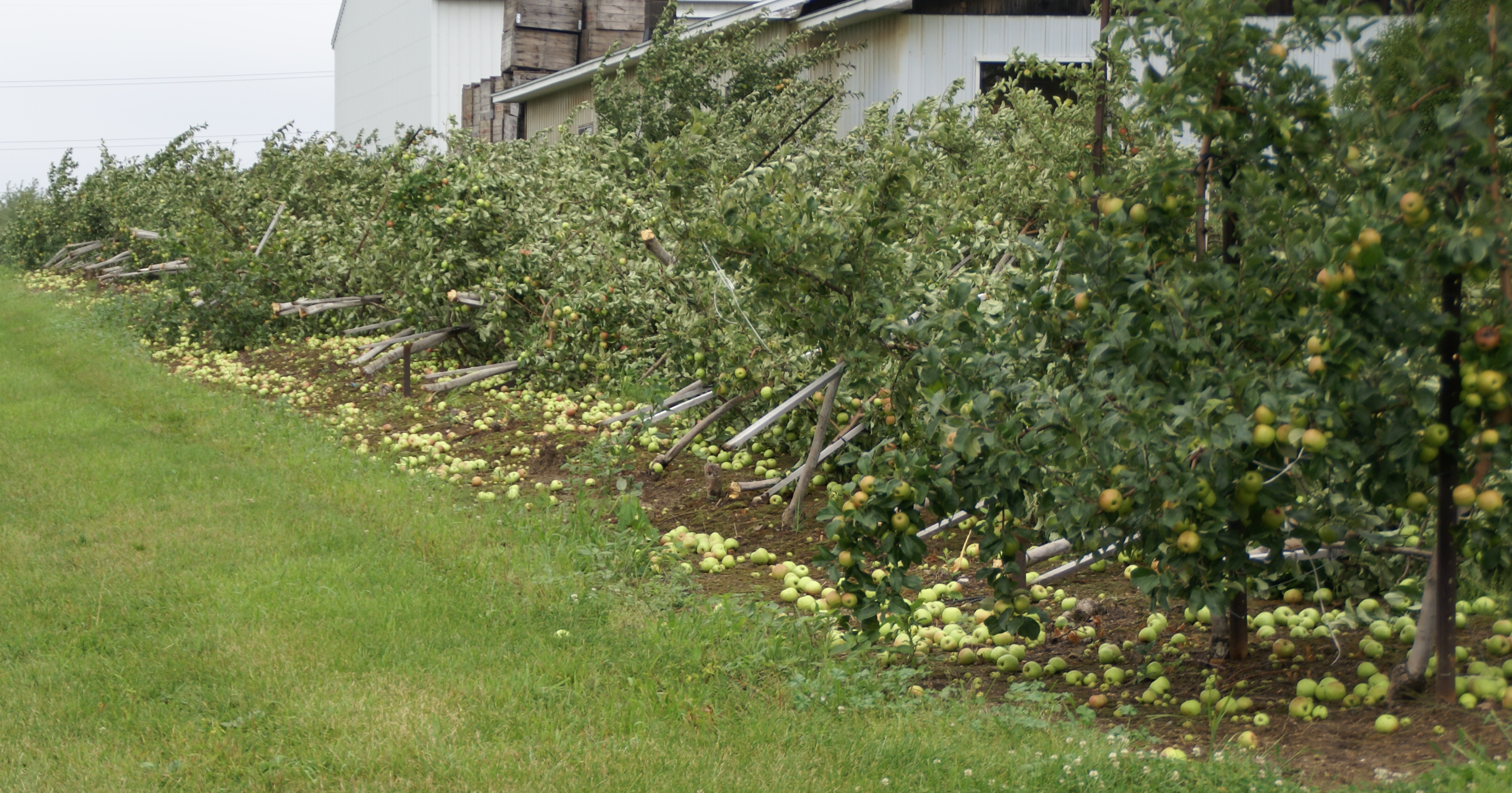
As a decision-maker on a farm, you will need to manage many risks. Production risk brought on by weather is one of the most challenging risks to manage. It can not only significantly damage potential yields but also affect markets and revenues. Crop insurance was created as a cost-effective means to aid farmers in managing or reducing the impact of these risks.
Crop insurance is provided through the United States Department of Agriculture (USDA)’s Risk Management Agency (RMA). Insurance policies are managed by Approved Insurance Providers appointed by the USDA. They are privately owned companies that employ the policy underwriters and claims staff. Policies are then sold and serviced through private agencies. They can be independently owned companies or part of agribusinesses that offer additional services.
Coverage policies are based on crop history of individual producers or an entire area, generally a county. They provide protection against yield losses due to natural causes such as drought, excessive moisture, hail, wind, frost, insects, disease, and, in some cases, market volatility.
Throughout this publication, we will review the basics of crop insurance and present how its use can benefit your farm. This includes understanding the differences between insurance policies, learning how each provides protection, and examining the advantages they offer. We’ll also review how USDA RMA provides beginning farmers with additional benefits to assist in managing risks.
Basics of Crop Insurance
Crop insurance for fruit crops typically looks at protection coverage based on individual producer risk. Individual producer risk is centered on a farm’s actual production or revenue made each year.
Policies offer indemnity (loss) payments that calculate when production or revenue fall below a coverage level. Coverage levels range from 50% to 85% depending on policy or crops being grown. Each incremental increase in coverage also brings with it a higher insurance premium you will need to pay.
Individual producer coverage can be further enhanced in additional ways. Insurance policies are set by crop per county. For example, if you elect to have coverage for apples in a certain county, it is mandatory that you insure all acres of that crop in which you have a share. The share includes all fresh and processing apples in that county. Though you have to insure the entire crop, you may qualify to modify unit structure within the county if you meet certain criteria, which is specific to each crop. Try to think of each unit as its own profit and loss center to manage.
The types of units available to fruit growers include basic or optional:
In a basic unit (BU), the entire crop per county is divided by the ownership split. For example, all owned and cash rent land can be considered an individual BU, while land in a share agreement with the landlord would be considered a separate individual BU.
In an optional unit (OU), the basic units of a crop are further divided. Each crop has slightly different provisions that allow separation into an OU. If qualified, producers can have unit blocks in separate township sections, noncontiguous blocks, separate types, and separate practices. Policy and special provisions provide the specifics per crop, which is helpful if fields in different township sections have significant variability. For example, fields in one township section may have a sandy loam soil type, while fields in a different township section may have a clay soil type. This presents different challenges that may warrant insuring the fields separately. Individuals using optional units must keep separate production records for each unit.
Insurance policies offer protection against production loss, revenue loss, or a combination of both. In all cases, actual planted acres are used in establishing an indemnity payment and production reporting to ensure accuracy in payment calculations. If production is not reported, each insurance policy has a series of consequences that will affect current or future coverage of your growing crop.
Actual Production History Coverage Policy
Actual production history (APH) coverage policies safeguard against losses to crop yields. The yield being covered is referred to as a production guarantee. The guarantee is calculated by using a percentage from a range of 50% to 85%, depending on the insured crop. Coverage levels can be increased in 5% increments, which you, as the insurance holder, select annually.
The guaranteed percentage is then multiplied against an average of the farm’s historical production records. These records are crop yields the farm has achieved in prior years. Historical production records are also referred to as APH. A minimum of 4 years and a maximum of the last 10 years (5 years for some crops) are used to determine the APH.
The APH is an important component of all individual policies as it sets the minimum coverage level you can expect during a production year. That importance can be seen in the options RMA has to help keep your APH at the highest possible level.
T-Yield
For individuals without production history in any of the first four years of having the insurance, you can use a T-yield (transition yield). T-yields are calculated for each crop within a county. The amount of production history a farm has will determine the percentage of the T-yield that can be used. With no yield history, most fruit crops are uninsurable. Many fruit policies in Michigan have minimum production requirements. So, the first year of history will be your actual, which gets used with 3 years of 80% of the county T-yield. Two years of actuals receives 90% for the other 2 years. If you have 3 years of actual historical yields, you can use 100% of the T-yield in the fourth year. Example 1 illustrates how these values are used in calculating an APH. Note that with no records, apples in Michigan will be uninsurable, as the producer cannot prove that they met the 150 bu/acre requirement.
|
Example 1: Calculating an APH Yield Using T-Yields (Apples) Assuming T-Yield of 500 Bushels/Acre |
|||||
|
Years |
No records |
1 year of records |
2 years of records |
3 years of records |
4 years of records |
|
Year 1 |
Uninsurable |
580 bu |
580 bu |
580 bu |
580 bu |
|
Year 2 |
Uninsurable |
500 bu x 80% = 400 bu |
565 bu |
565 bu |
565 bu |
|
Year 3 |
Uninsurable |
500 bu x 80% = 400 bu |
500 bu x 90% = 450 bu |
570 bu |
570 bu |
|
Year 4 |
Uninsurable |
500 bu x 80% = 400 bu |
500 bu x 90% = 450 bu |
500 bu x 100% = 500 bu |
560 bu |
|
APH |
Uninsurable |
445 bu |
511.25 bu |
553.75 bu |
568.75 bu |
To find the T-yield for your crop and county, visit the RMA Actuarial Information Browser found at the following website: https://legacy.rma.usda.gov/tools/. On the Actuarial Information Browser screen, (click on “Actuarial Information Browser”), select the “reinsurance year” you wish to view. Often the most current year available is selected. Then choose the commodity, commodity year, type of insurance plan, state, and county. The screen will provide a series of tabs; the one marked T-yield will provide the information for that selected crop.
Yield Adjustments, Cups, & Exclusions
Additional options help maintain your farm’s APH level and provide coverage in the event of a loss. These include a yield adjustment, yield cup, and yield exclusion. Note that these are not available on all crops. Review all available options for your crop and county with an insurance professional.
A yield adjustment uses the T-yield in substitution for poorer yield in a given year. If chosen, the adjusted yield would be equal to 60% of the T-yield for that crop.
A yield cup is an add-on option to the yield protection policy that allows you to safeguard against the effects a poor yield may have on your farm’s APH. It ensures that the APH will not drop by more than 10% of its current level in the year the poor yield is added to your history.
A yield exclusion is an option to exclude a yield when calculating your farm’s APH. The exclusion becomes available when RMA determines your county’s yield has fallen below 50% of its average APH. The same option can also be triggered by contiguous counties experiencing a similar low yield situation.
These options are helpful if you are new to farming, adding a new crop or enterprise, or have recently purchased additional land with no APH.
Additional APH Support for Beginning Farmers
Beginning farmers and ranchers as well as veteran farmers and ranchers are given additional support to maintain or establish APH levels. When a substitute yield adjustment is requested, 80% of the T-yield can be used instead of the standard 60% allowed to established producers. You also have the option to use the APH of a farm operation that you were previously involved in. To do this, you must have been involved in decision-making or physical activities to produce the farm’s crops.
Calculating the Production Guarantee
The calculation of coverage percentage by the APH (Example 2) determines what the production guarantee will be in the event of a loss:
APH x Coverage Level (%) = Production Guarantee
|
Example 2: Calculating a Production Guarantee |
||
|
APH yield (blueberries) |
Coverage level (%) |
Production guarantee |
|
4,000 pounds |
75% |
3,000 pounds (4,000 x 0.75) |
A yield loss is then calculated by comparing your production against your insured (covered) production in that year. If the yield produced on your farm is lower than the covered production, you will receive an indemnity payment for the difference.
For this calculation to be accurate, USDA annually verifies your production through a yield report form. Your insurance agent will provide this form to you to complete. The yields reported must be as accurate as possible. If you are audited and the findings reveal inaccurate or false reporting of yields, sanctions against your policy, and criminal or civil legal charges may be filed.
Review your records, especially sales receipts, and reconcile your production information after all production is sold. You may have to wait until the next production reporting period to provide an updated yield depending on when sales occur. However, this is especially important if you discover actual yields were higher than reported, as this benefits your APH for future production guarantees. If you find that actual yields are different than reported, contact your insurance agent to update your historical records.
You must have timely communication with your insurance agent about potential or realized losses. USDA RMA sets strict timelines that information must be reported to establish a loss has occurred. If a loss claim, or reporting of loss, is expected prior to harvest or shortly after harvest has concluded, contact your insurance agent as soon as possible.
Indemnity (Loss) Payment Calculation
Once the yield loss is established, the next consideration is how production will be valued for an indemnity (loss) payment. USDA’s RMA sets an established price for each crop covered with an APH policy that is used to value your production.
As the insured, you select what percentage of an established price you want to use with your insurance plan. You may only select one price election percentage for each type of crop being insured. For example, you have nonirrigated and irrigated blueberries that will be insured. You elect a price percentage of 100% for your nonirrigated blueberries. You must also elect a price percentage of 100% on your irrigated blueberries as well. The premium you pay for your policy is also adjusted based on what percentage of the established price you select. The higher a percentage elected, the higher your premium.
The price election is then used to calculate an indemnity payment based on your farm loss. For example: You have 25 acres of highbush blueberries with a production APH of 4,000 pounds (see Example 3). You elect 75% coverage for a production guarantee of 3,000 pounds per acre (see previous section). You have a price election of $0.87 per pound at 100% price percentage. You are able to harvest only 55,000 total pounds due to adverse weather reducing yield. Your indemnity payment would be calculated as:
(Production Guarantee ‒ Harvested Production) × (Elected Price × Price Percentage) = Indemnity Payment
|
Example 3: Calculating an Indemnity Payment for Actual Production History (APH) Policy |
|
|
Blueberry example |
Actual production history |
|
APH |
4,000 pounds per acre |
|
Coverage level |
75% |
|
Production guarantee |
3,000 pounds per acre |
|
Harvest yield |
2,200 pounds per acre |
|
Elected price percentage |
100% |
|
Elected price |
$0.45/pound |
|
Indemnity payment per acre |
(3,000 ‒ 2,200) × ($0.87 × 100%) = $696 per acre |
|
Acres |
25 |
|
Total indemnity payment |
$969 × 25 = $17,400 |
Eligible Crops for APH Coverage
Only select fruit crops are eligible to use APH as an insurance policy in each state. Eligibility is further limited based on historical production volumes within each county. This section will highlight Michigan crops eligible to use APH and what requirements must be met by each insuring farm.
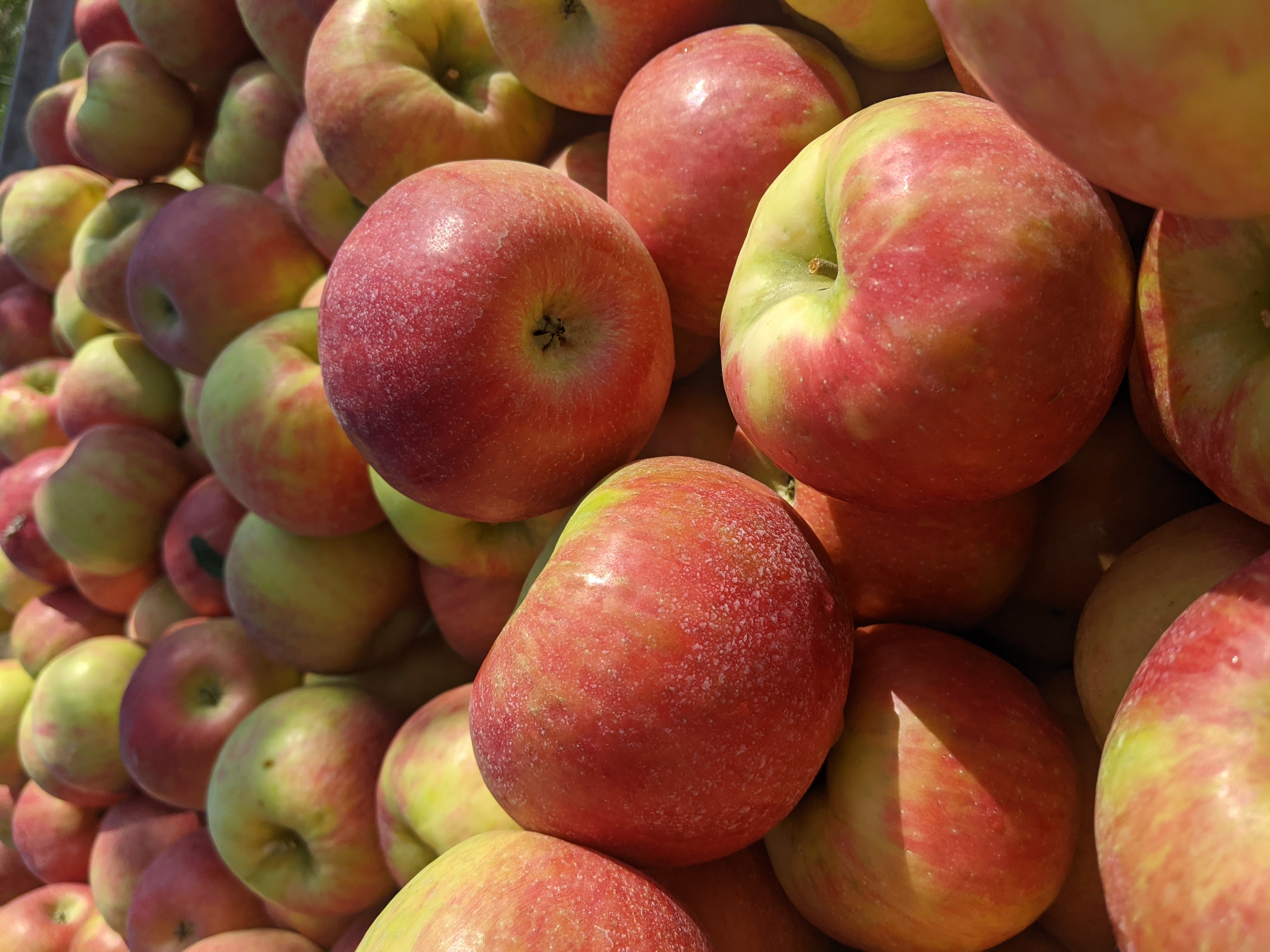
Apples
Apple types that can be insured include fresh, processed, organic certified, organic transitional, irrigated, nonirrigated, or variety groups. Variety groups consist of:
- Variety Group A: Honeycrisp and SweeTango/Minneiska
- Variety Group B: Cortland, Fuji, Gala, Jonagold, Jonathan, McIntosh, Zestar, and Pink Lady
- Variety Group C: All other apple varieties qualified as fresh not specified in Group B or Group A
A fresh fruit quality adjustment is a premium-based endorsement you can also elect for your covered apples. It elevates apples that grade at U.S. No. 1 to U.S. Fancy after production is harvested or appraised. Production graded at U.S. No. 1 must show 20% or more damage to qualify for an adjustment to U.S. Fancy grading. If damage exceeds 65% or more, no production adjustments will be made, and apple yields will remain at U.S. No. 1 grade.
A U.S. Fancy grade consists of apples of one variety that are not overripe, mature, clean, fairly well formed, and free from decay. They must also not have any internal browning, broken skins, visible or invisible injuries (such as water core), and they must also be free from damage. A U.S. No. 1 grade consists of apples that meet the requirements of U.S. Fancy grade except for color, russeting, and invisible water core. For more information on apple grades, visit Apple Grades & Standards through USDA’s Agricultural Marketing Service: https://www.ams.usda.gov/grades-standards/apple-grades-standards.
Minimum production requirements for Michigan apples are 150 bushels grown on your farm in one out of the past four years (1 out of 4). Apples use a 5-year database to determine an average APH and have a maximum coverage level of 75% production.
Michigan counties eligible for coverage include Allegan, Antrim, Benzie, Berrien, Cass, Clinton, Genesee, Grand Traverse, Ionia, Kalamazoo, Kent, Leelanau, Lenawee, Macomb, Manistee, Mason, Montcalm, Muskegon, Newaygo, Oceana, Ottawa, Shiawassee, Van Buren, and Washtenaw.
For more information on APH for apples, review the RMA Apple Fact Sheet: https://www.rma.usda.gov/Fact-Sheets/National-Fact-Sheets/Apples.
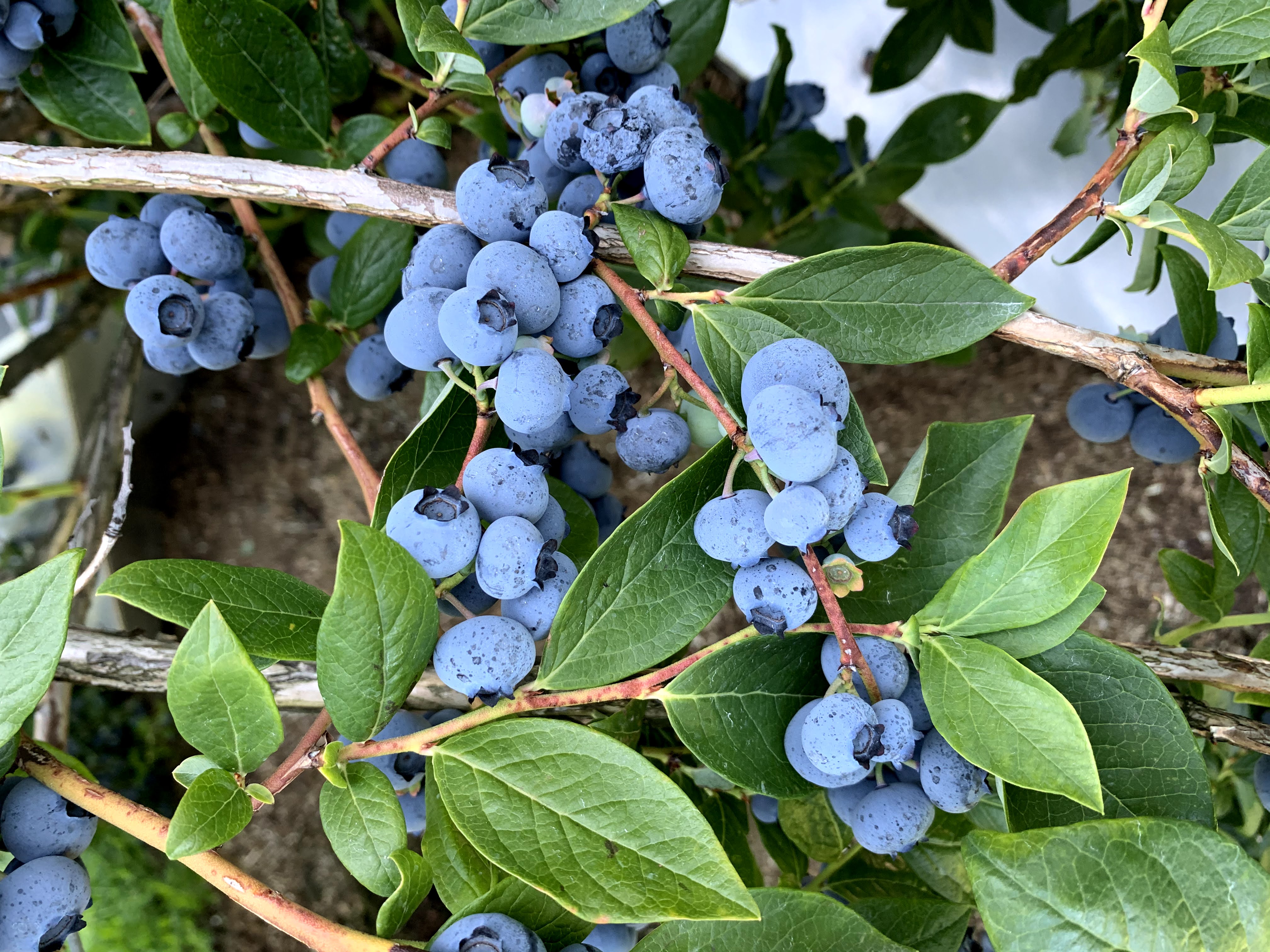
Blueberries
Blueberry types that can be insured include highbush, organic certified, organic transitional, irrigated, or nonirrigated.
Minimum production requirements for Michigan blueberries are 1,000 pounds per acre grown on your farm in one out of the past five years (1 out of 5). Blueberries use a 10-year database to determine an average APH and can have a maximum coverage level of 85% production. Yield adjustments are not an available option for blueberries.
Michigan counties eligible for coverage include Allegan, Berrien, Muskegon, Ottawa, and Van Buren.
For more information on APH for blueberries, review the RMA Blueberry Fact Sheet: https://www.rma.usda.gov/Fact-Sheets/Springfield-IL-Region-Fact-Sheets/Blueberries-2018-MI.
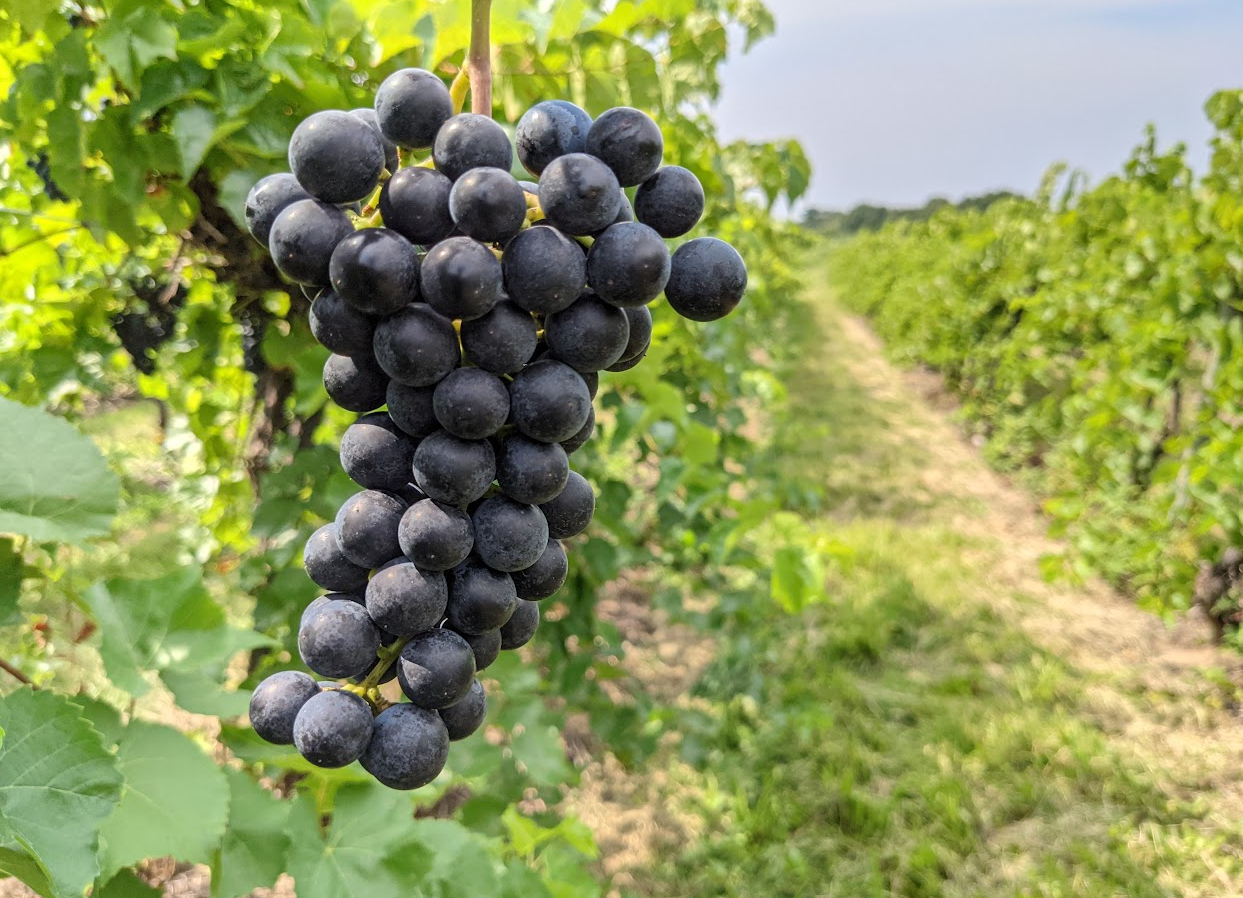
Grapes
Grape types that can be insured include organic certified, organic transitional, irrigated, nonirrigated, or variety groups. Variety groups consist of:
- Variety Group A: Buffalo, Clinton, Concord, Elvira, Fredonia, Missouri Riesling, and Steuben
- Variety Group B: Catawba, Delaware, Diamond, Dutchess, French Hybrids, Isabella, and Ives
- Niagara
Minimum production requirements for Michigan grapes are two (2) tons grown on a farm in one out of the past three years (1 out of 3). Grapes use a 10-year database to determine APH and have a maximum coverage level of 85% production.
Michigan counties eligible for coverage include Berrien, Cass, Kalamazoo, and Van Buren.
For more information on APH for grapes, review the RMA Grapes Fact Sheet: https://www.rma.usda.gov/Fact-Sheets/National-Fact-Sheets/Grapes.
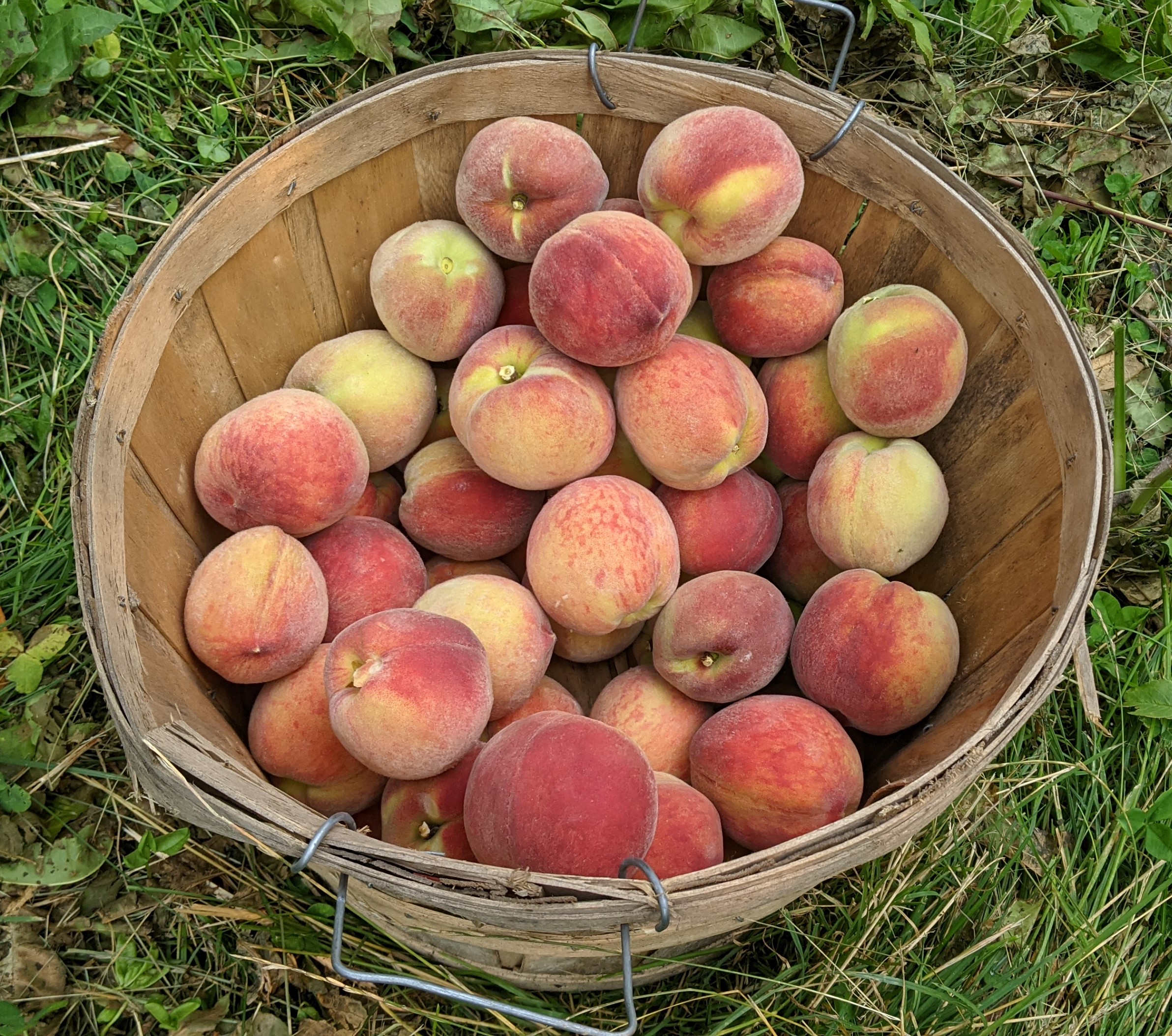
Peaches
Peach types that can be insured include fresh, processed, organic certified, organic transitional, irrigated, nonirrigated, or nectarines.
Minimum production requirements for Michigan peaches are that trees be in their fourth year since set-out. Set-out refers to when a peach tree was planted. Peaches use a 5-year database to determine an average APH and have a maximum coverage level of 85% production.
Michigan counties eligible for ensuring peach acres through APH coverage include Allegan, Berrien, Kent, Manistee, Mason, Muskegon, Oceana, Ottawa, and Van Buren.
For more information on APH for peaches, review the RMA Peach Fact Sheet: https://www.rma.usda.gov/Fact-Sheets/Springfield-IL-Region-Fact-Sheets/Peaches-2018-IL-MI.
Actual Revenue History Coverage Policy
Actual revenue history (ARH) coverage policies have some of the same components as APH policies. The key difference is that they add protection against price risk. The emphasis on price protection effectively changes the production guarantee into a revenue guarantee. If the revenue received by the farm is lower than the revenue guarantee, the farm receives an indemnity payment.
The revenue guarantee is based on an average of the farm’s historical revenue records. These records outline your farm’s production harvested and sold, and any appraised unsold production the farm has had in prior years. These records are important, because as the guarantee is based on revenue, it addresses risk concerns for yields, prices, or a combination of both. Having sufficient records to verify historical revenue for your farm is crucial to maximizing available coverage for your crop.
OUs for cherries are available by type and by noncontiguous blocks. The only history smoothing option available for cherries is the revenue substitution (RS). An RS uses a transitional revenue (t-revenue) in place for your farm’s revenue when revenue falls below 60%. The adjusted revenue is based on a 60% transitional yield or 80% for beginning farmers. Yield cup, yield adjustment, and yield exclusion are not available under the ARH policy.
Once historical revenues are identified, coverage levels for a revenue guarantee are similar to production guarantees. The coverage levels start at 50% and can be as high as 85%, depending on the insured crop. Coverage levels can also be increased in 5% increments. For example, you own a sweet cherry farm and certify your revenue as $3,500 based on historical revenue records (see Example 4). You review your coverage options and select a 75% level. The revenue guarantee is calculated as:
ARH x Coverage Level = Revenue Guarantee
|
Example 4: Calculating a Revenue Guarantee |
||
|
ARH |
Coverage level (%) |
Revenue coverage ($3,500 x 75%) |
|
$3,500 |
75% |
$2,625 |
Indemnity (Loss) Payment Calculation
Once a loss in yield is established, the next consideration is how production will be valued for an indemnity (loss) payment. To establish a payment amount, a price must be established to value your farm’s production.
An annual price is determined based on the average price of production you’ve sold or the appraised value of unsold production. The appraised value is based on what production would potentially be worth if sold at the time of an appraisal. If an annual price results in your annual revenue being below your revenue guarantee, the price is considered an inadequate market price.
Note: it is possible for your annual revenue to fall below your revenue guarantee even with an adequate market price. Yield is an understated but important component of determining annual revenue and calculating a final indemnity payment.
An added component of an ARH policy is including a payment factor into the revenue guarantee calculation. A payment factor is a percentage, expressed as a decimal, that is elected to reduce your premium. A payment factor also reduces your potential indemnity payment. The default percentage is 1.00 but can be lowered anywhere between 1.00 and a minimum factor based on your coverage level (see Table 1).
|
Table 1: Payment Factors Per Coverage Level |
||||||||
|
Coverage level |
50% |
55% |
60% |
65% |
70% |
75% |
80% |
85% |
|
Minimum factor |
1.00 |
0.91 |
0.84 |
0.77 |
0.72 |
0.67 |
0.63 |
0.59 |
Continuing the example from the previous section, your sweet cherry farm reaches harvest. Yields are normal, but an inadequate market price reduces your annual revenue to $1,750 per acre (Example 5). You’ve selected a payment factor of 0.85, which is between 0.67 and 1.00 based on your coverage level of 75%. The calculation for a final indemnity payment is:
(Revenue Guarantee – Actual Revenue) x Payment Factor = Indemnity Payment
|
Example 5: Calculating a Final Payment (Sweet Cherries) |
|||
|
Revenue guarantee |
Actual revenue |
Payment factor |
Final payment |
|
$2,625 |
$1,750 |
0.85 |
($2,626 - $1,750) x 0.85 = $743.75 |
Eligible Crops for ARH Coverage
Only select fruit crops are eligible to use ARH as an insurance policy in each state. Eligibility is further limited based on historical production volumes within each county. Sweet and tart cherries are Michigan’s only crops eligible to use ARH. The follow requirements must be met by each insuring cherry farm.
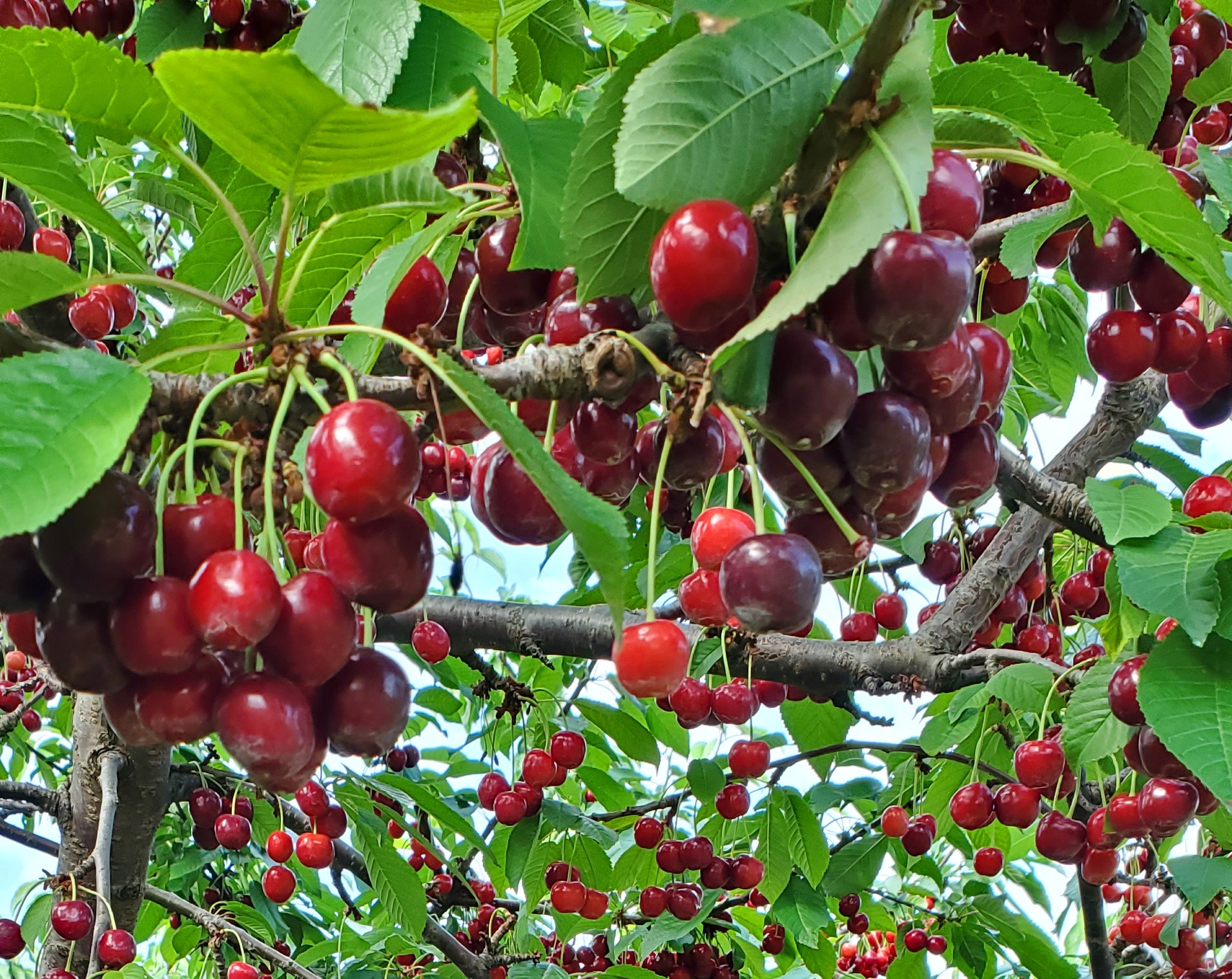
Sweet Cherries
Cherry types that can be insured include sweet canners, sweet fresh, sweet briner (processing), organic certified, organic transitional, irrigated, or nonirrigated.
Minimum production requirements for Michigan sweet cherries are 4,000 pounds per acre grown on your farm in one out of the past five years (1 out of 5). Sweet cherries use a 10-year database to determine an average ARH and have a maximum coverage level of 85% production.
Michigan counties eligible for coverage include Allegan, Antrim, Benzie, Berrien, Cass, Charlevoix, Grand Traverse, Kent, Leelanau, Manistee, Mason, Muskegon, Newaygo, Oceana, Ottawa, and Van Buren.
For more information on APH for sweet cherries, review the RMA Sweet Cherry Fact Sheet: https://www.rma.usda.gov/Fact-Sheets/Springfield-IL-Region-Fact-Sheets/Sweet-Cherry-2018-MI.
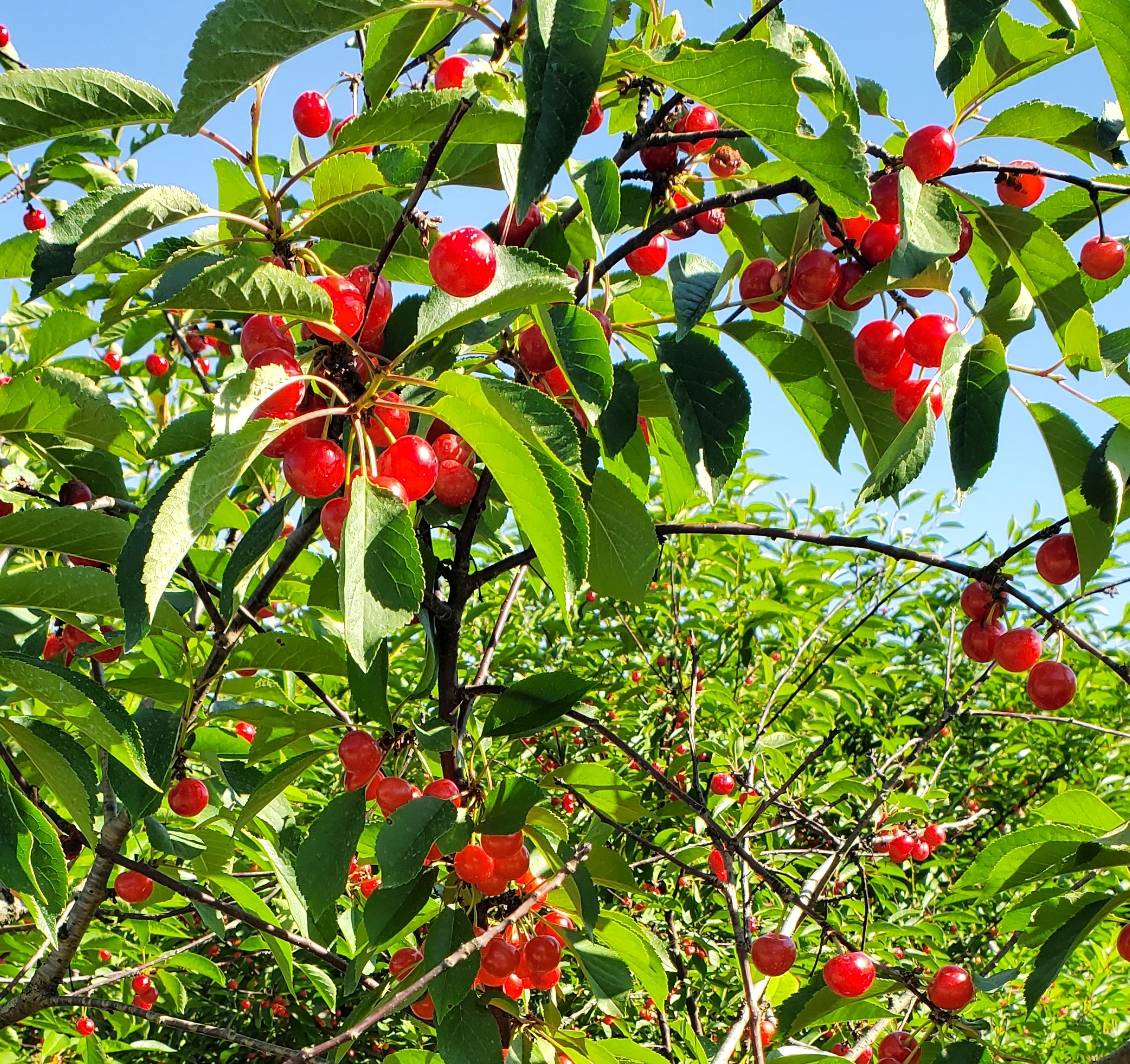
Tart Cherries
Cherry types that can be insured include tart, organic certified, organic transitional, irrigated, or nonirrigated.
Minimum production requirements for Michigan tart cherries are 3,900 pounds per acre grown on your farm in one out of the past five years (1 out of 5). Tart cherries use a 10-year database to determine an average ARH and have a maximum coverage level of 85% production.
Michigan counties eligible for coverage include Allegan, Antrim, Benzie, Berrien, Cass, Charlevoix, Grand Traverse, Kent, Leelanau, Manistee, Mason, Muskegon, Newaygo, Oceana, Ottawa, and Van Buren
For more information on APH for tart cherries, review the RMA Tart Cherry Fact Sheet: https://www.rma.usda.gov/Fact-Sheets/Springfield-IL-Region-Fact-Sheets/Tart-Cherry-2018-MI.
Premiums & Subsidies
Crop insurance is not free and requires a premium be paid for its use. The premium for each type of policy will increase or decrease based on crop units and the coverage level you elect. Additional features, such as yield adjustments, yield cups, or yield exclusions will also increase the premium you pay.
Despite the costs associated with crop insurance, know that premiums are highly subsidized by the USDA. Therefore, the premium you pay is not the full price for the insurance. These subsidies increase or decrease based on unit type and coverage level you elect as well. Table 2 highlights the current subsidies associated with enterprise units:
|
Table 2: Tart Cherry Optional Unit Subsidy Rates |
||||||||
|
Coverage level |
50% |
55% |
60% |
65% |
70% |
75% |
80% |
85% |
|
Subsidy |
67% |
64% |
64% |
59% |
59% |
55% |
48% |
38% |
To be eligible for the subsidy, you must have the AD-1026 form filled out and on file at your local Farm Service Agency office. You can find a copy of the form at https://www.farmers.gov/sites/default/files/documents/Form-AD1026-Highly-Erodible-Land.pdf
Additional Subsidy Support for Beginning Farmers
Beginning farmers receive an additional 10% or percentage points of premium subsidy toward existing coverage policy. The percentage points increase the subsidy and reduce the overall premium for the insurance. This applies to all insurance policies that have a subsidized premium through the USDA RMA.
For example, a farm in Grand Traverse County has 20 acres of apples with an APH of 500 bushels per acre (Table 3). They elect to use basic units and an APH policy of 75% for fresh apples. Their policy is subsidized at 55% (they pay 45% of total premium). A beginning farmer with the same policy would be subsidized at 65%, which translates to a substantial discount. The addition of the 10% or percentage points yields a $338.85 net premium. This is a difference of $96.15 per acre less than the non–BF (non–Beginning Farmer) premium calculation of $435.00.
|
Table 3: Effect of Beginning Farmer (BF) Subsidy on Insurance Premium |
||||
|
Policy type: MPCI |
Plan/share/options |
Acres |
APH |
Net premium/acre |
|
Grand Traverse - apples |
APH 75% BF |
100 |
158 |
$338.85 |
|
Grand Traverse - apples |
APH-75% |
100 |
158 |
$435.00 |
Whole-Farm Revenue Protection
An additional option that can be used on its own or combined with individual insurance policies is a Whole-Farm Revenue Protection (WFRP) plan. It provides coverage for all commodities on a farm under one insurance policy. Designed for farms with up to $8.5 million in insurable revenue, it covers both crops and livestock. A WFRP plan also covers revenues for farms that market to local, regional, farm-identity preserved, specialty, or direct markets. However, no more than 50% of total revenue from commodities must be purchased for resale.

Record Requirements
You must provide certain documents to ensure eligibility for WFRP insurance. These records include:
- Five consecutive years of Schedule F or other farm tax forms.
- Information supporting your farm as an expanding operation due to physically expanding last year or in an upcoming year. Expansion activities include increased acres, added equipment such as a greenhouse, new varieties or planting patterns, or anything that expands production capacity beyond price changes.
- Any supporting information that verifies tax forms are accurate and filed with the Internal Revenue Service may be needed.
Exceptions to record requirements include:
- Beginning or veteran farmers may quality with three consecutive years of Schedule F or other tax forms if farmed in previous year. If you qualified as a beginning farmer or veteran farmer in a previous year, four years of tax forms are needed.
- Physical inability to farm for one out of five required historic years may qualify if farming in previous year.
- You operate as a tax-exempt entity (such as a Tribal entity) and have third-party records available to complete substitute Schedule F tax forms to demonstrate a five-year history.
Calculating the Revenue Guarantee
Farm records are an important part of determining your farm’s approved revenue. An approved revenue is used to determine your amount of insurable revenue based on your historic gross income. The historic gross income is averaged over five years, as reported on Schedule F income tax forms. As of 2020, new provisions reduce impacts on gross income due to losses during your five-year history, such as excluding the lowest year. The remaining four years are then averaged into an adjusted historic average revenue and compared to expected revenues for an upcoming crop year. Whichever of these two revenue numbers is lower becomes the approved revenue.
Note: Expected revenues must be based on allowed revenue streams. Examples of nonallowable revenue streams include custom-hired agricultural work, contract growing, government program payments (such as Conservation Reserve Program participation), and post-production processing.
The insured revenue is calculated by multiplying your approved revenue by your coverage level:
Approved Revenue x Coverage Level (%) = Insured Revenue
Coverage levels range from 50% to 85%, similar to other insurance policies (see Table 4). To use levels at 80% or 85%, a farm must have a minimum of three commodities. A calculation of all commodities is then used to determine if diversification is suitable to warrant higher levels of coverage. The same calculation is used to set a premium rate discount based on your farm’s diversification and a subsidy amount. Farms with two or more commodities automatically receive a whole-farm subsidy, while farms with only one commodity receive a basic subsidy.
|
Table 4: Maximum Farm Approved Revenue at Each Coverage Level |
|||
|
Coverage level |
Commodity count (Minimum required) |
Maximum farm approved revenue (MFAR) |
Maximum insurable revenue |
|
85 |
3 |
$10,000,000 |
$8.5 million |
|
80 |
3 |
$10,625,000 |
$8.5 million |
|
75 |
1 |
$11,333,333 |
$8.5 million |
|
70 |
1 |
$12,142,857 |
$8.5 million |
|
65 |
1 |
$13,067,923 |
$8.5 million |
|
60 |
1 |
$14,166,167 |
$8.5 million |
|
55 |
1 |
$15,454,545 |
$8.5 million |
|
50 |
1 |
$17,000,000 |
$8.5 million |
Indemnity (Loss) Payment Calculation
At the end of the season, after you have filed your farm income taxes, a loss adjuster will review your records. The adjuster will look for allowable revenue and expenses, inventory adjustments, unharvested or unsold production, and production lost from causes not covered by the program. The adjuster will use your farm records to determine an actual total farm revenue. A loss indemnity payment is made when you farm’s actual total revenue falls below the insured revenue.
Revenue Guarantee – Actual Revenue = Indemnity Payment
For more information on a WFRP plan, visit RMA’s WFRP Fact Sheet at https://www.rma.usda.gov/en/Fact-Sheets/National-Fact-Sheets/Whole-Farm-Revenue-Protection.
Micro Farm Program
A Micro Farm Program (MFP) is similar to a WFRP plan. It also provides coverage for all commodities on a farm under one insurance policy, including both crops and livestock. No more than 50% of total revenue from commodities must be purchased for resale. An MFP also covers revenues for farms that market to local, regional, farm-identity preserved, specialty, or direct markets. A key difference for an MFP policy is that it is designed for farms with up to $100,000 in insurable revenue.
Additional Differences From Whole-Farm Revenue Protection
Additional differences exist with an MFP compared to a WFRP policy. Those differences include:
- A minimum of only three consecutive years of Schedule F or farm tax forms are needed to determine an approved revenue, including the most current year.
- If your farm operation has been expanding over time, approved revenue may be allowed to increase. Five years of consecutive years of revenue history and measurements of growth are needed to verify expansion.
- Use of an 80% or 85% coverage level does not have a requirement of three or more commodities being grown to qualify.
- A WFRP policy uses individual prices to value commodities. In an MFP policy, one value for all commodities will be calculated for your farm, based on average revenues from your farm history.
- MFP policies cannot be vertically integrated or combined with other individual insurance policies.
- Value-added products such as wine from grapes or lotion from lavender are considered insurable revenue for MFP, unlike in WFRP where they are excluded.
Indemnity (Loss) Payment Calculation
Indemnity payments are also handled similarly to a WFRP policy. At the end of a season, a loss adjuster will review your records. The adjuster will use your farm records to determine an actual total farm revenue. A loss indemnity payment is made when you farm’s actual total revenue falls below the insured revenue.
Revenue Guarantee – Actual Revenue = Indemnity Payment
For more information on an MFP plan, visit RMA’s MFP Fact Sheet at https://www.rma.usda.gov/en/Fact-Sheets/National-Fact-Sheets/Micro-Farm-Program.
Final Thoughts & Recommendations
In addition to the policy options outlined in this publication, there are also private nonsubsidized (peril) policies on the market. The cost vs. benefit of these policies varies widely, but a crop insurance agent can help guide the decision of what is best for each individual farm.
Michigan State University Extension recommends visiting with a crop insurance agent to discuss the policy options and risk scenarios that exist for your farm operation. Due to the number of details and options within crop insurance policies, deciding what to do can become complicated. Many insurance policies overlap with USDA Farm Service Agency programs (such as Supplemental Coverage Option, known as SCO, and Enhanced Coverage Option, known as ECO). A strong working relationship with your agent can be helpful when it comes to record keeping, program analysis, and program rollout notifications. Agents can provide specific details on eligibility, timelines, and documentation requirements for policies and options of interest. If you plan to pre-harvest market, they can also help ensure your insurance policies match with your marketing strategies. To visit with a crop insurance agent, use the Agent Locator Page offered through the USDA’s RMA (https://www.rma.usda.gov/Information-Tools/Agent-Locator-Page).



 Print
Print Email
Email





